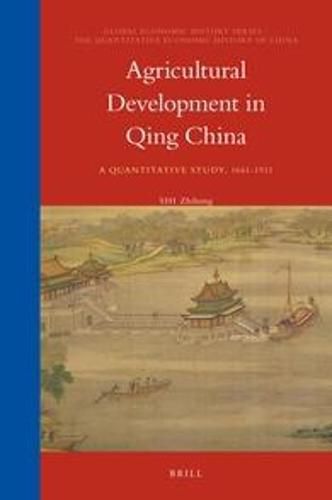Readings Newsletter
Become a Readings Member to make your shopping experience even easier.
Sign in or sign up for free!
You’re not far away from qualifying for FREE standard shipping within Australia
You’ve qualified for FREE standard shipping within Australia
The cart is loading…






In Agricultural Development in Qing China: A Quantitative Study, 1661-1911 SHI Zhihong offers for the first time an overview of agricultural development in Qing China in the English language. Being by far the largest sector in one of the largest economies in the world, understanding its development is crucial not only for agricultural studies, but also to advance economic debates such as on the Great Divergence.
Combining the recent quantitative paradigm with the more traditional scholarly approach, this book uses a great number of primary sources to arrive at new and revised estimates of crucial indicators such as land acreage, crop yield, pasture, and total output. Its main conclusion is that a serious economic and social problem occurred since the mid-Qing, where agriculture was increasingly less able to feed a growing population, which was a major factor contributing to the growing crisis in the rule of the dynasty.
$9.00 standard shipping within Australia
FREE standard shipping within Australia for orders over $100.00
Express & International shipping calculated at checkout
In Agricultural Development in Qing China: A Quantitative Study, 1661-1911 SHI Zhihong offers for the first time an overview of agricultural development in Qing China in the English language. Being by far the largest sector in one of the largest economies in the world, understanding its development is crucial not only for agricultural studies, but also to advance economic debates such as on the Great Divergence.
Combining the recent quantitative paradigm with the more traditional scholarly approach, this book uses a great number of primary sources to arrive at new and revised estimates of crucial indicators such as land acreage, crop yield, pasture, and total output. Its main conclusion is that a serious economic and social problem occurred since the mid-Qing, where agriculture was increasingly less able to feed a growing population, which was a major factor contributing to the growing crisis in the rule of the dynasty.